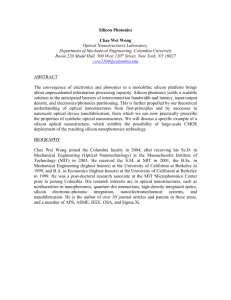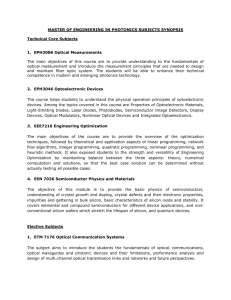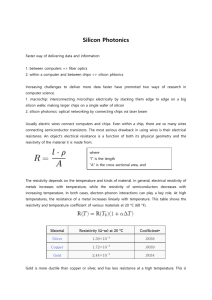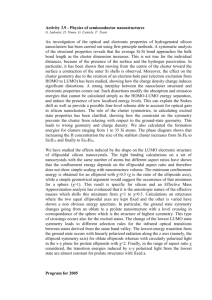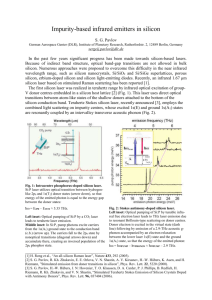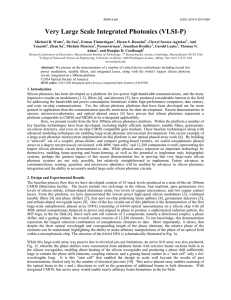Silicon Photonics
advertisement
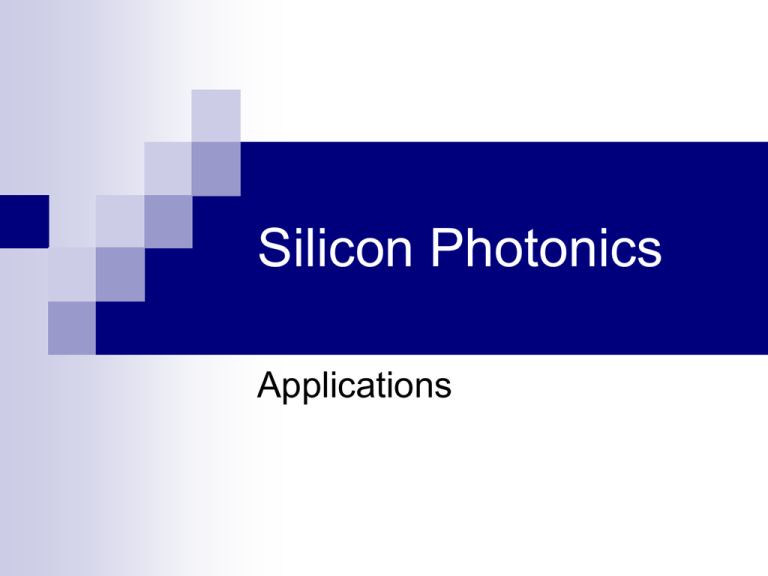
Silicon Photonics Applications Introduction Photonics is the technology of signal processing, transmission and detection where the signal is carried by photons (light) Optical technology has always suffered from its reputation for being an expensive solution, due to its use of exotic materials and expensive manufacturing processes. Silicon photonics is an evolving technology in which data is transferred among computer chips by optical rays. Optical rays can carry far more data in less time than electrical conductors. Purpose of Silicon Photonics The computing and communications industries face increasing challenges to deliver more data faster Silicon photonics may even have applications beyond digital communications, including optical debug of high-speed data, expanding wireless networks by transporting analog RF signals, and enabling lower-cost lasers for certain biomedical applications. Main building blocks for investigation Applications 1. Continuous Silicon Laser Two-Photon Absorption 2. First GHz Silicon Modulator 3. The First Cascaded Silicon Raman Laser 4. Practical silicon-core optical fiber Optical fibres typically comprise a glass core surrounded by another glass of similar composition and are fabricated by a process of heating and drawing out into long wires. The US team is using a similar manufacturing approach but has replaced the glass core with silicon. The silicon-core optical fibre is fabricated by sleeving the silicon core inside a silica (glass) cladding at the temperature where the glass cladding softens and draws into fibre (approximately 1950°C).
